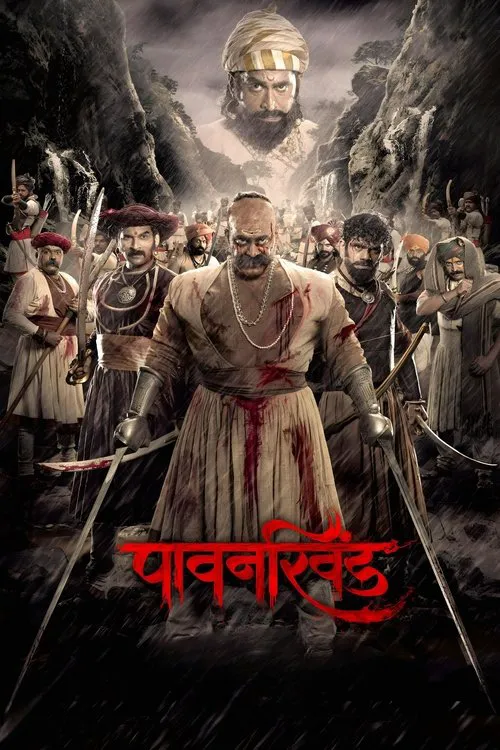Pawankhind

Plot
In the year 1660, the reign of the Adilshah Sultanate, under the ruler Sultan Adil Shah, spanned vast territories in the Deccan region of India. The Sultanate's power, however, was threatened by the rise of the Maratha Confederacy, a coalition of various Maratha clans who were vying for independence and autonomy from their Mughal overlords. Among these Maratha clans was the powerful Deshmukh family, whose members played a crucial role in the struggle for power in the region. Baji Prabhu Deshpande, a brave and skilled Maratha warrior, was a member of the Deshmukh family. He was chosen by the Maratha king Shivaji to be the commander of the army tasked with capturing the strategic fort of Vishalgad, which was under the control of the Adilshah Sultanate. The fort, situated atop a hill in the vicinity of the city of Kolhapur, Maharashtra, held immense strategic value as it controlled the supply routes and provided access to the fertile valleys below. Baji Prabhu, along with his army of about 300 Maratha warriors, embarked on the perilous journey to capture the fort. Their mission, however, was not an easy one, as they faced numerous challenges along the way. The Adilshah Sultanate's forces, led by Siddi Masud, a seasoned and ruthless military commander, had established a strong presence in the region. Masud was known for his cunning tactics and bravery in battle, which made him a formidable opponent. As Baji Prabhu's army progressed towards the fort, they encountered Siddi Masud's forces on a mountain pass, known as the Pavankhind, which was the only route to the fort. The two armies clashed in a fierce battle, with Baji Prabhu's warriors fighting valiantly but outnumbered. Despite being outgunned, Baji Prabhu utilized his tactical prowess to the fullest, employing clever strategies to weaken Masud's forces. One such strategy involved creating a diversion by creating a fire in one part of the mountain pass. This tactic allowed Baji Prabhu's warriors to attack Masud's forces from behind, while also creating a smoke screen that hindered the enemy's vision. The ruse proved to be effective, and Siddi Masud's forces were taken aback by the sudden turn of events. In the face of such unexpected resistance, Siddi Masud knew that his forces were at a disadvantage. He ordered a retreat, knowing that the terrain and the clever tactics employed by Baji Prabhu's warriors made it difficult for them to gain the upper hand. As the two armies clashed in the fierce battle, Masud, despite his valiant efforts, realized that his forces were on the back foot. The Maratha warriors, fueled by their determination to capture the fort, continued to push the Adilshah forces back. In the chaos of the battle, Baji Prabhu was severely injured. Despite his injuries, he continued to fight alongside his comrades, leading them in a final charge against Siddi Masud's forces. In the end, it was this charge that proved to be the decisive factor in the battle. The Maratha warriors, led by Baji Prabhu, broke through the enemy lines and began to gain ground. Siddi Masud's forces, realizing that the battle was lost, began to retreat in disarray. The bravery and sacrifice of Baji Prabhu and his comrades ultimately led to the victory of the Maratha Confederacy at the Battle of Pavankhind. Baji Prabhu, realizing that capture was imminent, is said to have sacrificed his own life and freedom to allow Masud and his soldiers to escape, so that they would not be put to death. This courageous act of Baji Prabhu earned him a place in history as a legendary warrior and a symbol of the Maratha nation's struggle for freedom and independence. The battle of Pavankhind was a defining moment in the Maratha Confederacy's quest for power, and it paved the way for the eventual rise of the Maratha Empire under the leadership of Chhatrapati Shivaji. In conclusion, the Battle of Pavankhind was a testament to the bravery and strategic prowess of Baji Prabhu Deshpande and his Maratha warriors. Their determined efforts to capture the fort of Vishalgad were a reflection of their commitment to their cause and their willingness to make the ultimate sacrifice in the pursuit of freedom and independence.
Reviews
Recommendations




